Roses are flowering plants that belong to the Rosaceae family. They are known for their beautiful and fragrant blooms, which come in a wide range of colors, including red, pink, white, yellow, and orange. The flowers typically have five petals arranged in a symmetrical pattern around a central point or “eye.”
In addition to their stunning appearance and fragrance, roses also have thorny stems and serrated leaves. They can grow as shrubs or climbing vines, depending on the variety.
When it comes to bloom cycles, there are two main types of roses: repeat blooming and continuous blooming. Repeat-blooming roses produce multiple flushes of flowers throughout the growing season, with short periods of rest in between each bloom cycle. Continuous-blooming roses produce flowers constantly throughout the growing season without any significant breaks.
Both roses have advantages and disadvantages depending on your gardening goals and preferences. Repeat-blooming varieties may require more maintenance but offer longer-lasting blooms, while continuous-blooming varieties provide constant color without requiring as much attention from gardeners.
Overall, no matter what type of rose you choose to grow in your garden or landscape design project, one thing is certain, they will always be among some of our most beloved floral species!
Comparing Repeat Roses vs. Continuous Roses
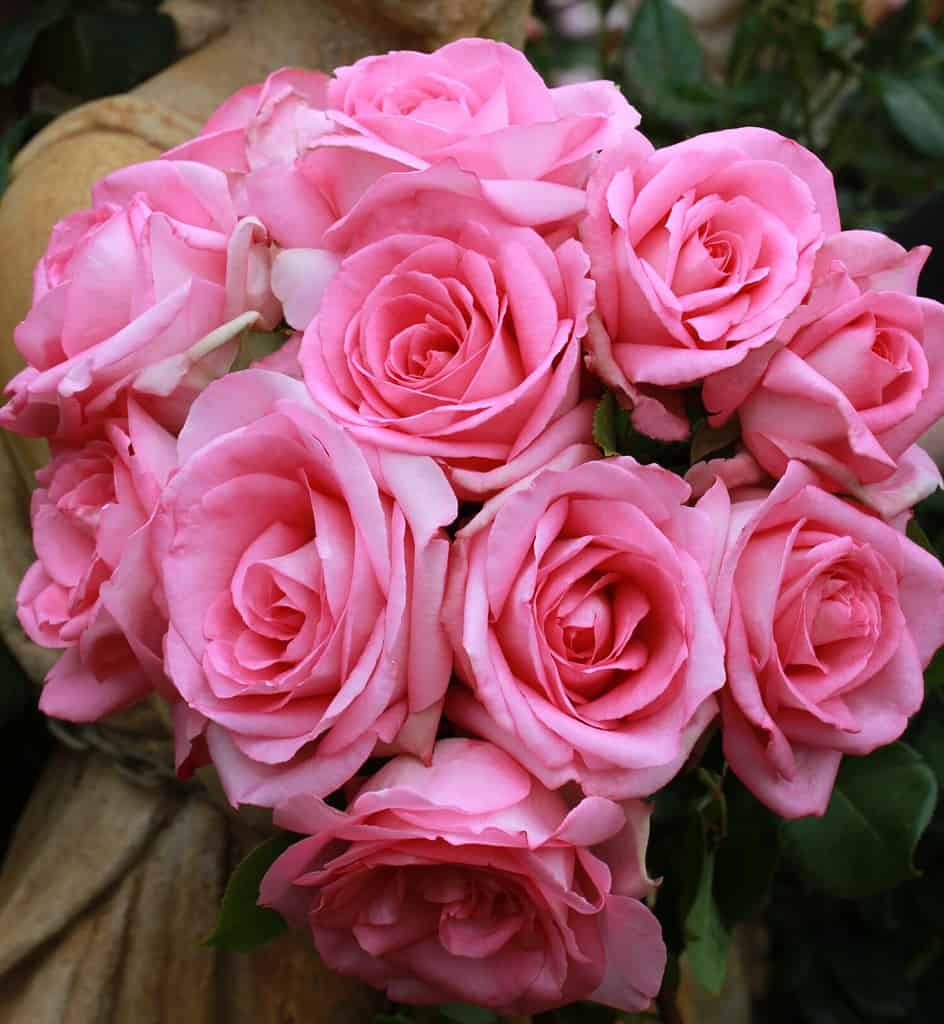
©Gary Matuschka/Shutterstock.com
Repeat roses and continuous roses differ in the length of bloom time, scent, variety, and the length of time they keep fresh in a vase. We will discuss all of the differences in detail below.
Key Differences Between Repeat Roses vs. Continuous Roses
The key difference between repeat blooming roses and continuous blooming roses is the blooming season. Repeat roses bloom twice each year (spring and fall), while continuous blooming roses flower from late spring until the first frost in the fall. The two types of roses also have different fragrances, and one is more common than the other.
Repeat Blooming Roses vs. Continuous Roses: Bloom Time
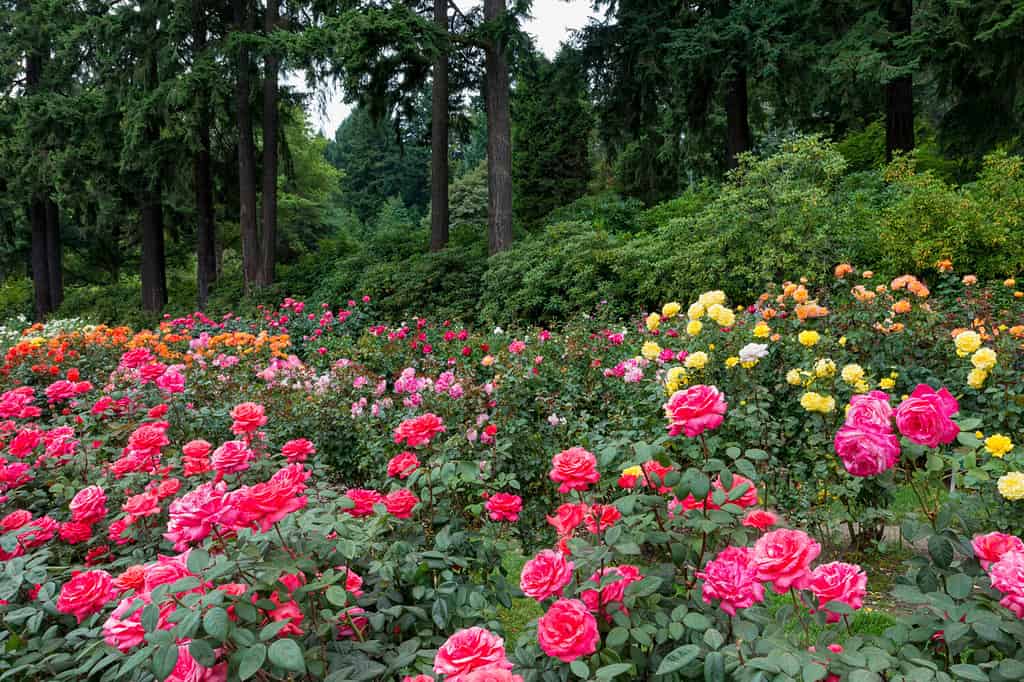
©Nagel Photography/Shutterstock.com
When it comes to understanding the differences between repeat-blooming roses and continuous roses, a key factor to consider is their bloom time. Repeat blooming roses typically produce flowers in two flushes throughout the growing season. The first bloom is in late spring or early summer, and the second flush is in the fall. These blooms are often more abundant than those of continuous-blooming roses but tend to be shorter-lived.
On the other hand, continuously blooming roses produce flowers constantly throughout the growing season, from late spring until frost. While they may not produce as many blooms at once as repeat bloomers do during each flush, their constant flower production means that there will always be some beautiful blossoms on display throughout the entire growing season.
It’s also worth noting that while both types of roses can benefit from deadheading (removing spent blooms), this practice is especially important for repeat-blooming varieties since it helps encourage new growth and subsequent flowering later in the season. In contrast, because continuous blooming roses produce new buds all season long, deadheading is less critical for maintaining their appearance.
Overall, when deciding which type of rose to plant in your garden, whether you prefer an abundance of short-lived blooms or a steady stream of never-ending blossoms, considering factors like bloom time can help guide you toward making a choice that best suits your needs and preferences.
Repeat Blooming Roses vs. Continuous Roses: Flower Count
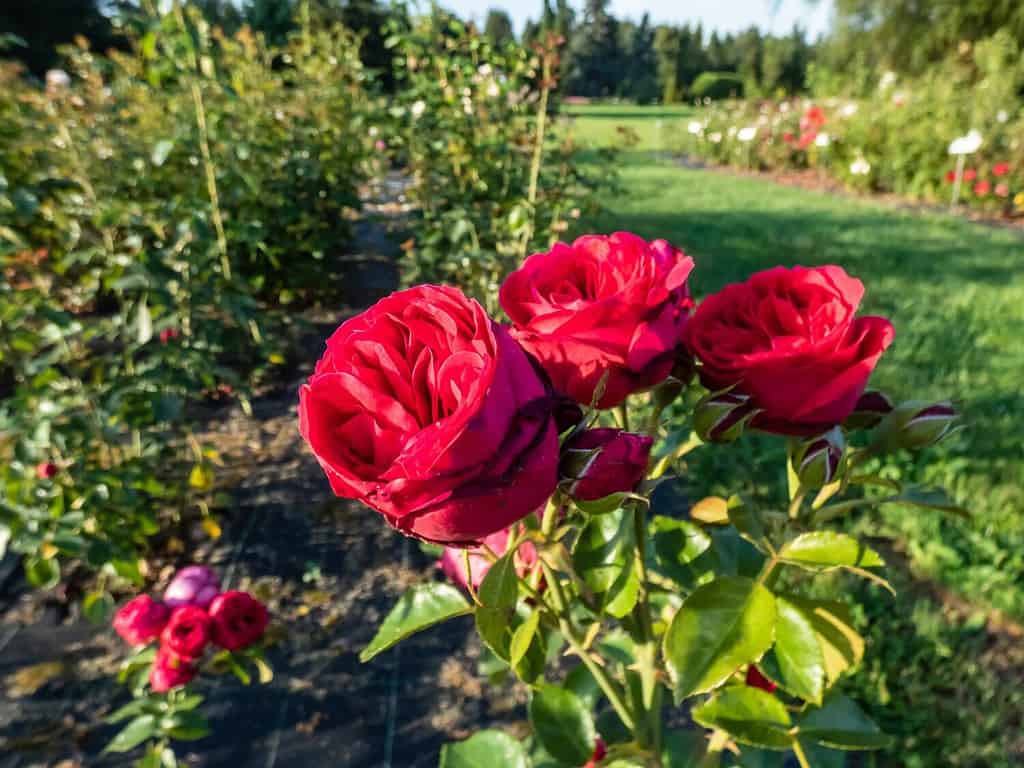
©Kristine Rad/Shutterstock.com
When it comes to the number of flowers on repeat-blooming, rose bushes versus continuous blooming rose bushes, there are some notable differences. Repeat blooming roses tend to produce a larger quantity of flowers in one flush or bloom cycle but then may have a shorter period before producing another flush. On the other hand, continuous-blooming roses often have a lower overall flower count per bloom cycle, but they continue to produce blooms throughout the season.
It’s important to note that both types of roses can be equally stunning and impressive in their own way. Some gardeners prefer the abundance of repeat-blooming varieties, while others appreciate the steady stream of blooms provided by continuous-blooming plants. Ultimately, it depends on individual preferences and goals for your garden space.
Proper care and maintenance will help ensure healthy growth and abundant blooms regardless of which type you choose. This includes regular pruning and fertilization as well as careful attention to watering needs based on weather conditions and soil moisture levels.
Whether you opt for repeat blooming or continuous blooming roses (or perhaps even a mix of both), these beautiful plants are sure to bring joy and color into any outdoor space.
Repeat Blooming Roses vs. Continuous Roses: Scent
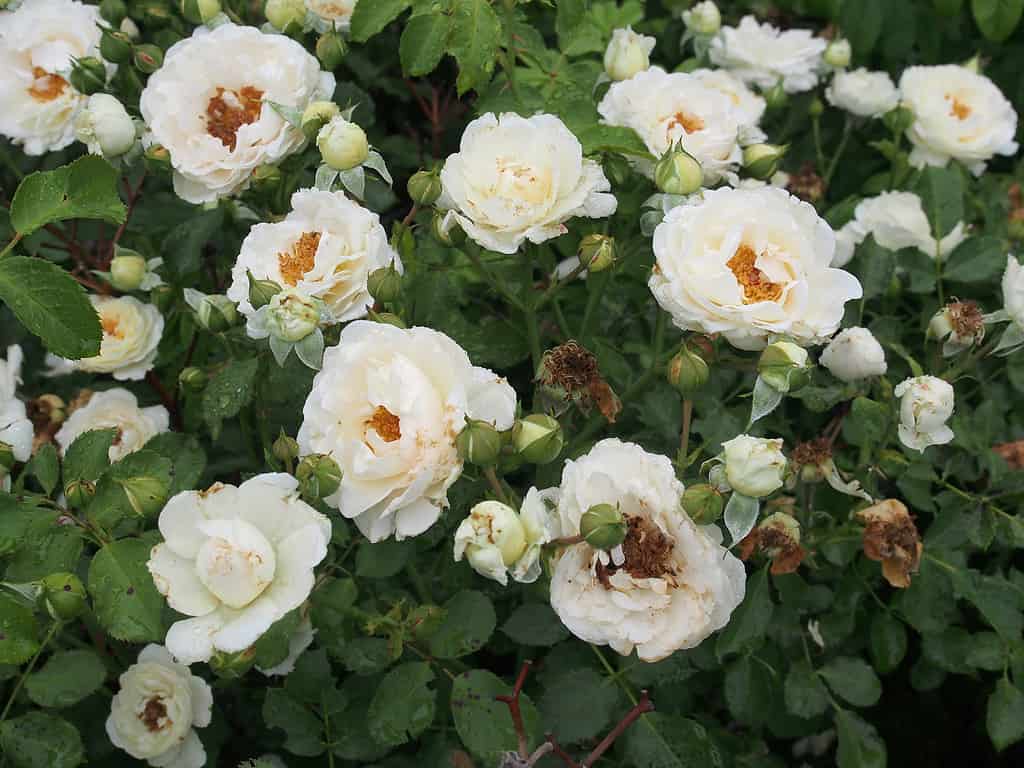
©
When it comes to scent, there is a slight difference between repeat-blooming and continuous-blooming roses. Continuous-blooming roses have an overall weaker scent than repeat-blooming roses. The difference is not drastic. You can find scented varieties in both categories.
Factors such as soil quality, temperature, and sunlight can also impact the strength of a rose’s fragrance. It is important to note that while scent may be an important factor in selecting roses for your garden or home, it should not be the sole determining factor. Other considerations, such as color, size, disease resistance, and overall aesthetic appeal, should be taken into account when making your selection.
Repeat Blooming Roses vs. Continuous Roses: Variety
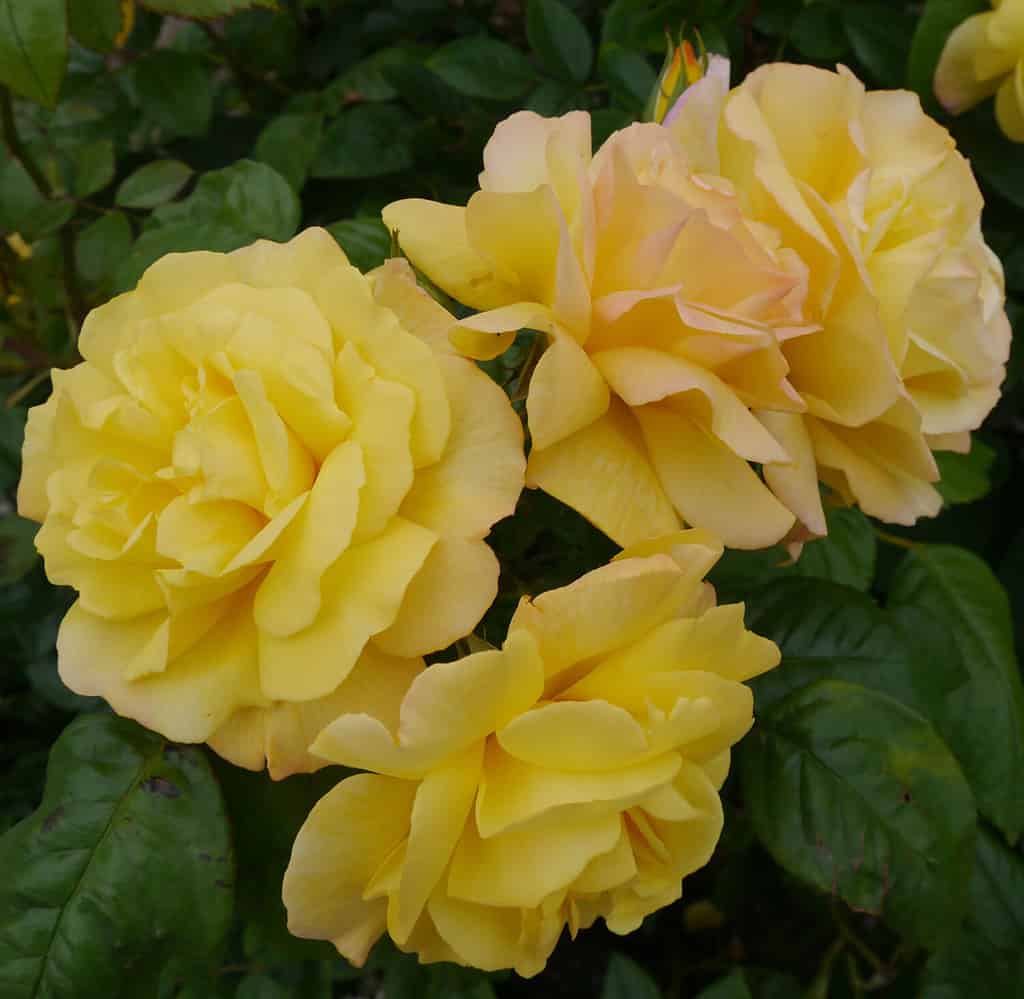
©John R Martin/Shutterstock.com
Continuous-blooming roses are a rarer find compared to their repeat-blooming counterparts. In fact, out of the thousands of rose varieties available on the market today, only a select few fall under the category of continuous blooming.
This scarcity can be attributed to several factors. For one, continuous blooming requires more energy from the plant as it must constantly produce new blooms throughout its growing season. As such, not all rose species are capable of sustaining this level of growth and development. Furthermore, breeding programs often focus on developing repeat-blooming varieties due to their popularity among gardeners and florists alike.
However, those who manage to get their hands on some continuous blooming roses will be rewarded with a truly unique gardening experience. These flowers offer an extended period of beauty in your garden or home’s floral arrangements without needing constant care and maintenance like other plants may require.
In conclusion, while repeat-blooming roses may dominate the market due to their popularity and ease-of-care properties, true rose enthusiasts should keep an eye out for rare specimens like the elusive but rewarding continuous bloomers when searching for additions to their flower gardens or bouquets!
Repeat Blooming Roses vs. Continuous Roses: Vase Life
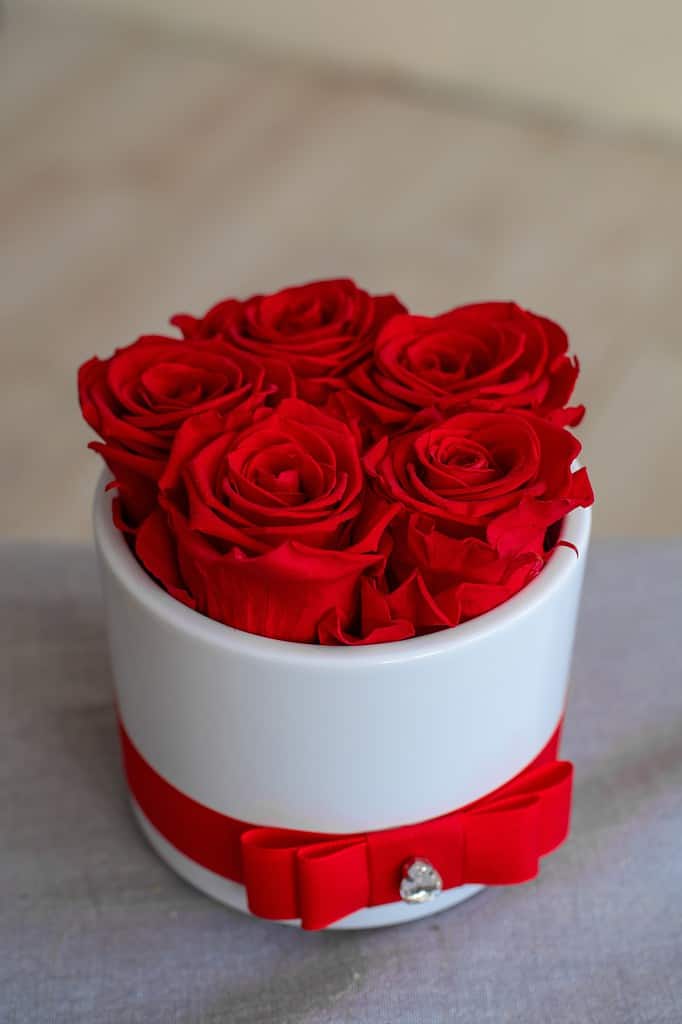
©Aimur Kytt/Shutterstock.com
When it comes to choosing roses for a vase, it’s important to consider not only their beauty but also their longevity. While both repeat-blooming and continuous-blooming roses can make stunning arrangements, there is a slight difference in how long they last once cut and placed in water.
Continuous-blooming roses are known to have a slightly longer vase life than their repeat-blooming counterparts. If you’re looking for blooms that will stay fresh and vibrant in your home or office for as long as possible, you may opt for the former.
While the difference between the two types of roses’ vase life isn’t drastic – only a few days – even this small discrepancy can be significant depending on your needs. If you’re planning an event or simply want your flowers to look their best for as long as possible, those extra few days could make all the difference.
Of course, other factors, such as proper care and handling, also play a role in determining how long any type of rose will last in a vase. But when deciding which variety to choose specifically based on its ability to hold up well over time, this information about continuous- versus repeat-bloomers could prove helpful indeed.
Recommended Types — Continuous
When it comes to choosing between repeat blooming roses and continuous blooming roses, there are a few types of the latter that stand out as popular and reliable options. One such rose is the Blush Noisette, which is a climbing rose with exquisite pink blossoms that stay in bloom from spring all the way through fall. Its ability to flower continuously throughout the growing season makes it an excellent choice for those who want to enjoy beautiful blooms year-round.
Another great option for those seeking a continuous-blooming rose is Rosa ‘New Dawn.’ Similar to Blush Noisette, this variety is also a climber but boasts silvery pink flowers with an enchanting scent. It, too, can be counted on to produce blooms from spring until fall.
The third popular type of continuous blooming rose worth mentioning is Rosa Margaret Merril’s “Harkuly.” This floribunda features single-petaled pure white roses with golden centers and outstanding disease resistance. Gardeners who choose this type can count on it producing a profusion of gorgeous blooms throughout its flowering season, adding beauty and fragrance to any space in which they’re planted.
Recommended Types — Repeat
When it comes to repeat blooming roses, the David Austin English shrub roses are undoubtedly the most popular choice. These beautiful roses have been bred to bloom twice per season, providing gardeners with a stunning display of color and scent throughout the year.
What makes these roses so special is that they are actually old garden roses that have been given a double-blooming twist. This means that in addition to their classic charm and beauty, they also offer the added benefit of disease-resistance and strongly scented flowers.
With so many varieties available in every conceivable color and scent, choosing just one can be a difficult task. Some favorites among enthusiasts include ‘Vanessa Bell,’ a pale yellow shrub rose with a strong tea scent accented by hints of honey and lemon. This rose grows up to 4 feet tall, making it perfect for creating height in your garden design.
If you’re looking for something truly captivating, consider ‘Scepter’d Isle’ – this variety boasts an impressive 45 petal count per bloom! The myrrh fragrance is incredibly enticing and will draw you into its beauty time after time as it reaches up to 5 feet tall when fully grown.
Another cultivar worth mentioning is ‘Gabriel Oak,’ which features fuchsia-colored blooms with an irresistible fruity scent complemented by delicate purple stems. Not only does this rose make for an excellent cutting flower, but it also looks fabulous when displayed in vases around your home or office.
The post Repeat Blooming Roses Vs Continuous Blooming Roses appeared first on AZ Animals.
from Animal News, Facts, Rankings, and More! - AZ Animals https://ift.tt/78DHdIE